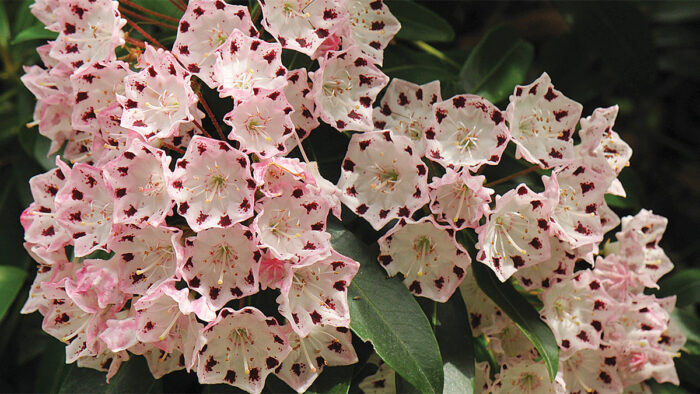
In an episode of Fine Gardening‘s podcast, Let’s Argue About Plants, the hosts discuss the importance of evergreen plants, and the particular perks of broadleaf evergreens:
“The key to any successful four-season garden is evergreens. Conifers are great, but they can be pricey and slow to bulk up. Broadleaf evergreens, on the other hand, bulk up quickly and are generally affordable. The only drawback is they can be boring. In fact, most gardeners think only of rhodies and hollies when it comes to this classification of plants.”
Don’t be fooled by the common varieties, there is much more to this plant category than one might think while walking around the local garden center. To help shed light on some fabulous, underappreciated broadleaf evergreens, we had regional experts pick their top four. Below, you’ll find great picks for the Mid-Atlantic. To discover more fantastic evergreens, check out LAAP Episode 26: Broadleaf Evergreens.
Find broadleaf evergreens for other regions: Interesting Broadleaf Evergreens for Your Region
1. ‘Dahlonega’ camellia
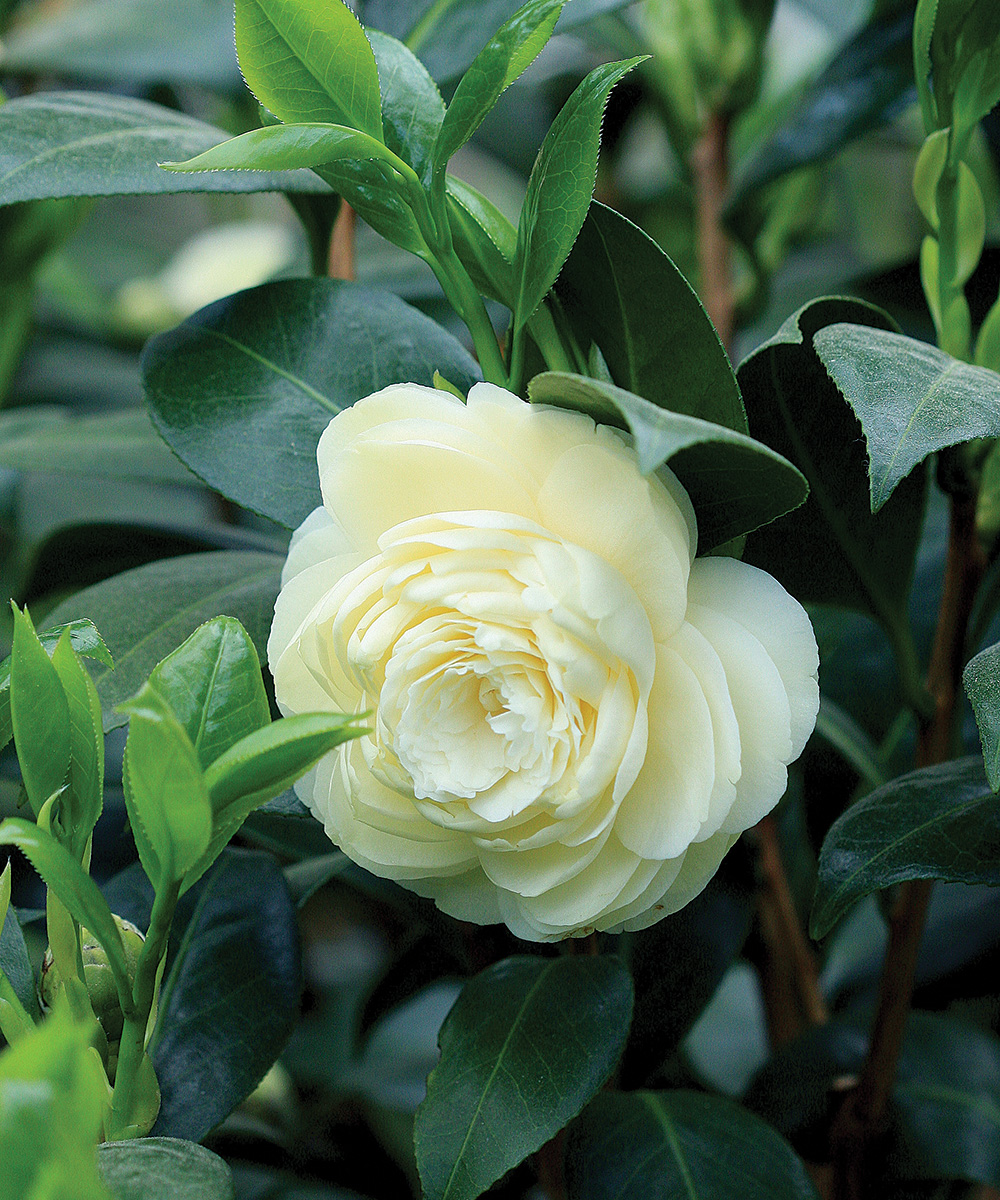
Name: Camellia japonica ‘Dahlonega’
Zones: 7–9
Size: 10 to 12 feet tall and 8 feet wide
Conditions: Full sun to partial shade; moist, well-drained soil
Native range: China, Japan
This camellia, developed in Georgia, has cream-colored double blossoms with a yellow tinge that bloom in mid to late spring. The flowers appear above dense, deep green foliage. While it can take full sun, this shrub thrives in partial shade with acidic soil. It can also climb along a structure such as a trellis or a brick wall. Prune it after the blooms are spent and it will produce new flowers that become more yellow over time. ‘Dahlonega’ is a compact, upright shrub that should be watered liberally when flowering and also when there’s dry weather.
2. ‘Girard’s Rainbow’ leucothoe
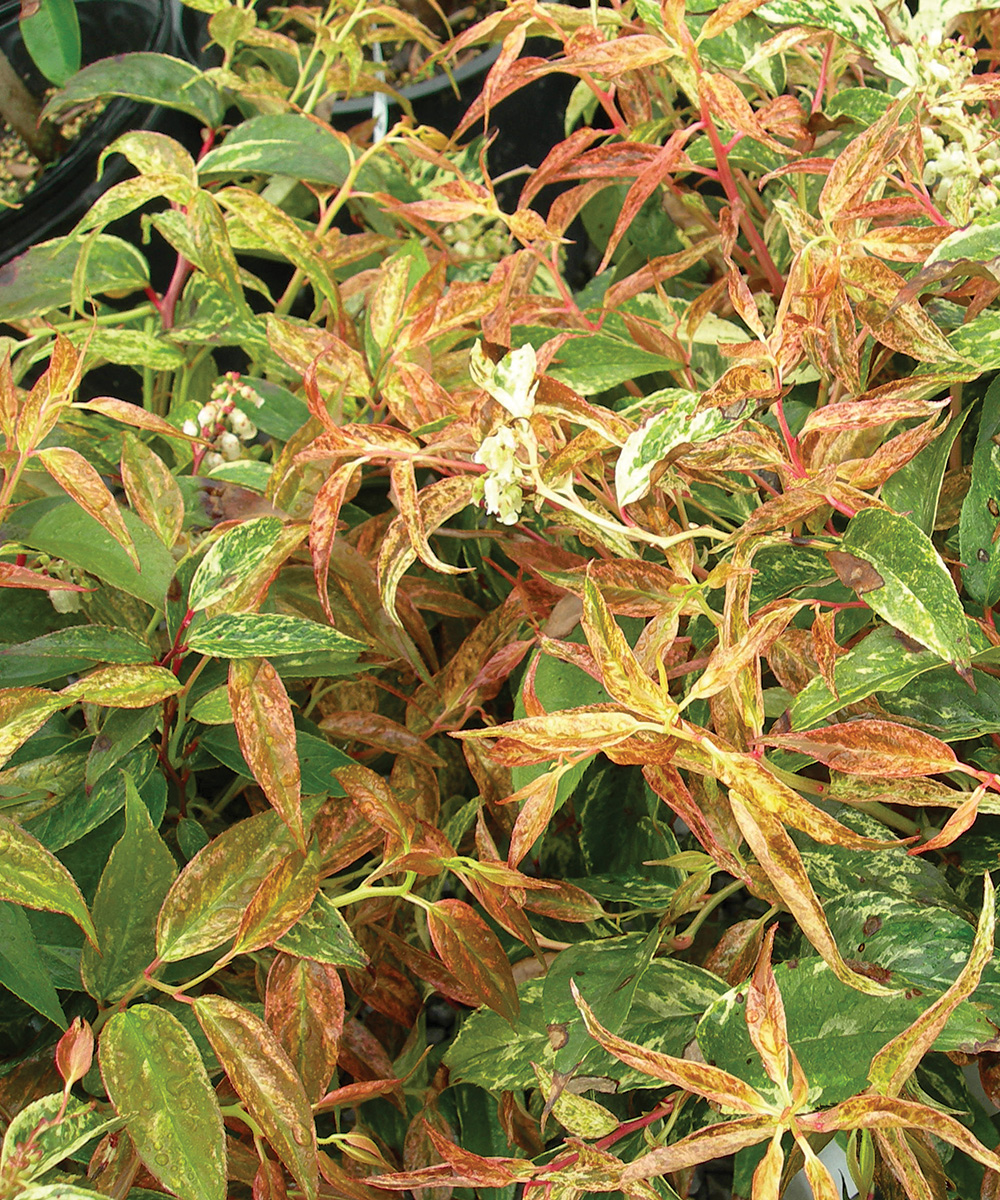
Name: Leucothoe fontanesiana ‘Girard’s Rainbow’
Zones: 5–8
Size: 6 feet tall and wide
Conditions: Partial to full shade; moist, well-drained soil
Native range: Southeastern United States
This is a mostly deer-resistant nativar with showy, drooping, spring-blooming flower clusters. The blossoms are ideal for arrangements and are attractive to butterflies and other native pollinators. In perfect conditions ‘Girard’s Rainbow’ will very slowly grow to its mature size with an erect habit. This leucothoe has speckled white, green, and sometimes pink foliage and is perfect for breaking up areas of the garden that are too dark or monotone. It’s a good option for borders and hedges, or for underplanting beneath tall trees. ‘Girard’s Rainbow’ rarely needs pruning except for structure. Water weekly and deeply, especially during hot summer weather.
3. ‘Freckles’ mountain laurel
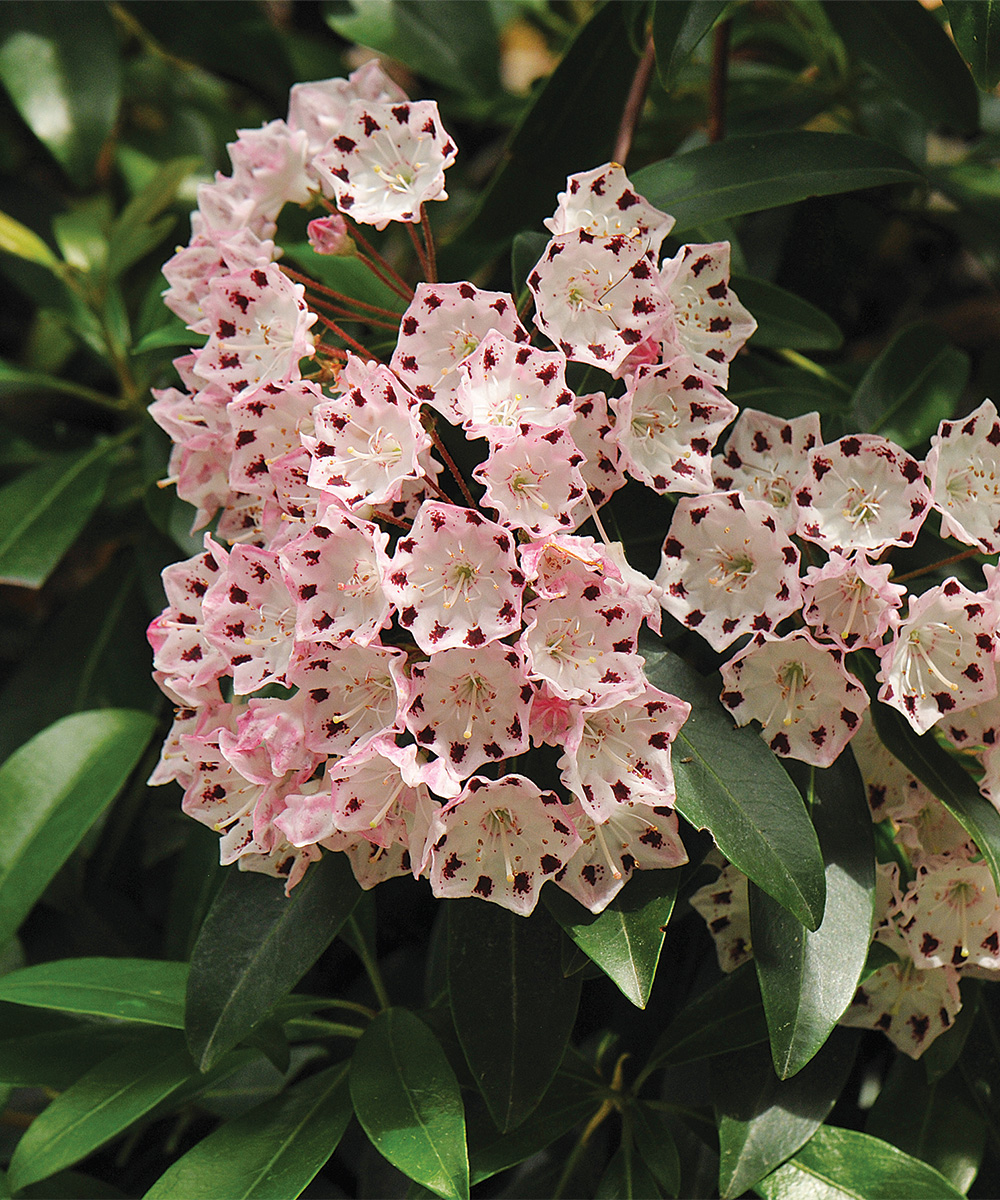
Name: Kalmia latifolia ‘Freckles’
Zones: 5–8
Size: 10 feet tall and wide
Conditions: Full sun to full shade; moist, acidic, well-drained soil
Native range: Eastern North America
This beautiful mountain laurel cultivar became a sensation when it was introduced by Broken Arrow Nursery in Hamden, Connecticut. ‘Freckles’ is a butterfly magnet in spring with long-lasting, cup-shaped white flower clusters that are speckled with purple. Unlike some broadleaf evergreens that wither in full sun, ‘Freckles’ thrives in it. It also does well in shade. When first planted, this mountain laurel needs regular deep watering, but once established, it just needs an application of acidic fertilizer every spring and most likely will require no pruning.
4. ‘Soft Caress’ mahonia
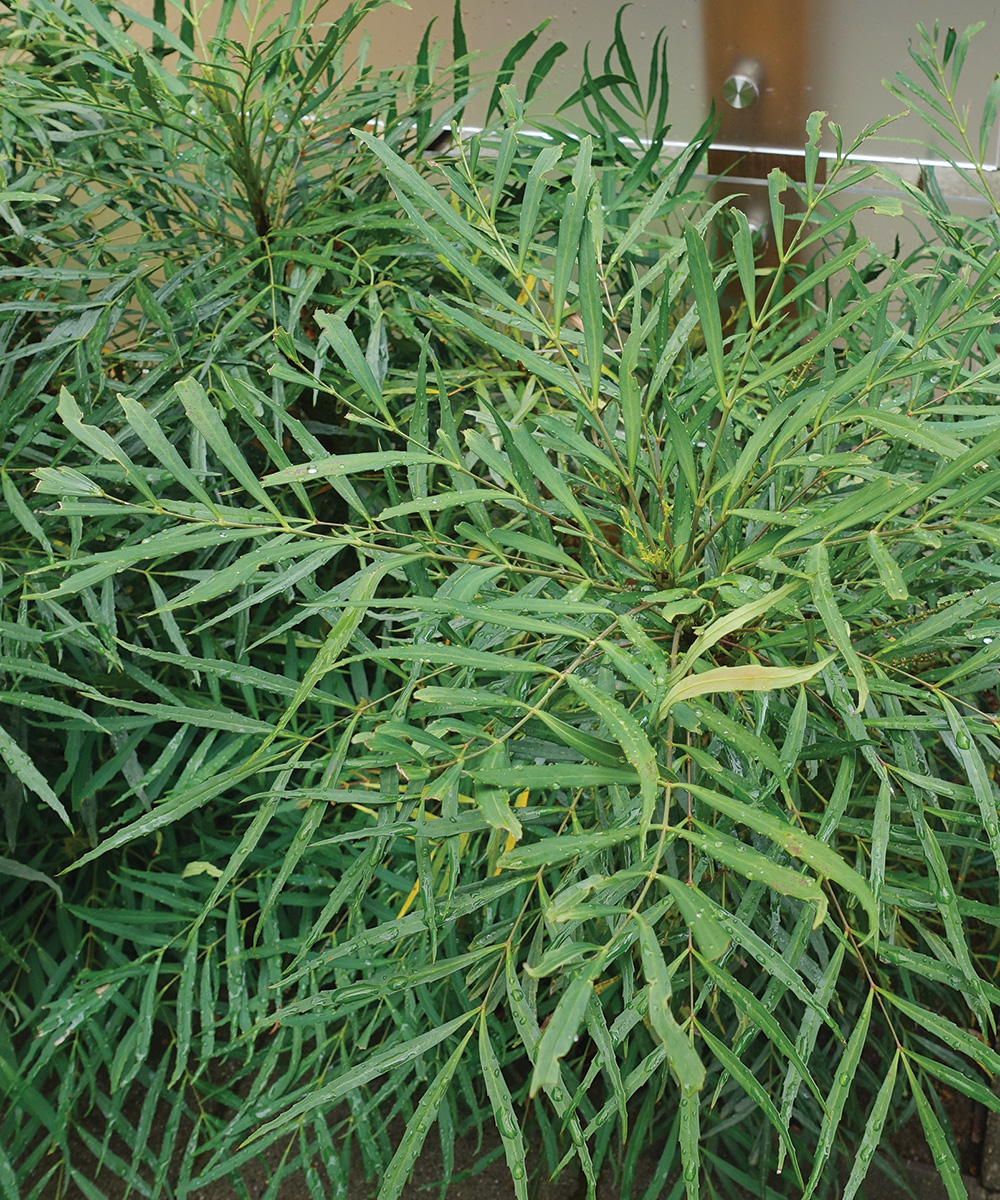
Name: Mahonia eurybracteata ‘Soft Caress’
Zones: 7–9
Size: 3 feet tall and 4 feet wide
Conditions: Partial to full shade; well-drained soil
Native range: China
‘Soft Caress’ mahonia, with its frilly, textured, bamboo-like foliage, is a wonderful addition to an Asian-inspired garden or any space where a light, airy aesthetic is desired. With its compact growth habit, easy care, and pest resistance, it’s the ideal plant for a large container or slope. ‘Soft Caress’ produces bright yellow flowers in late fall or early winter, and unlike other mahonias, it’s thornless and safe to grow where children and pets play. This mahonia is a water-wise plant that thrives even when it relies only on rainfall. No pruning is needed, although you might want to deadhead spent flowers. A balanced, slow-release fertilizer can be applied at the start of every growing season. Bunnies love this plant, so watch out for them.
Wambui Ippolito is a landscape designer and horticulturalist based in New York City.
Click here to find plant picks, garden tips, and more for the Mid-Atlantic.


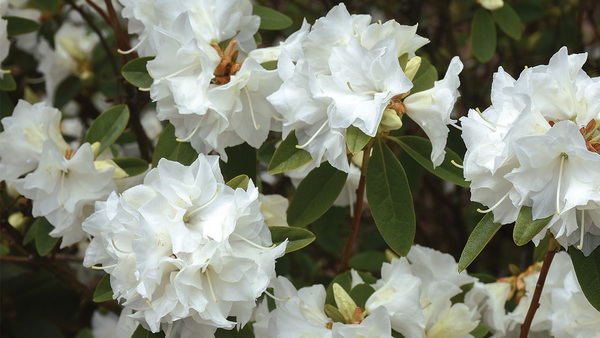
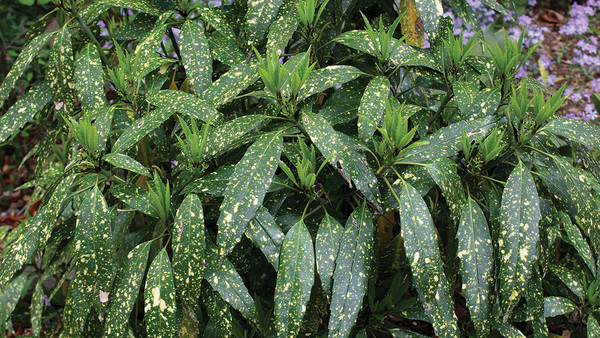
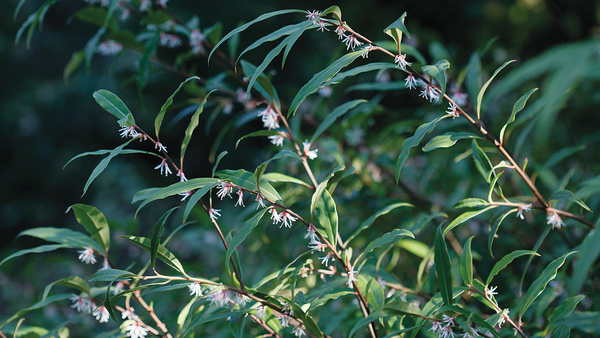
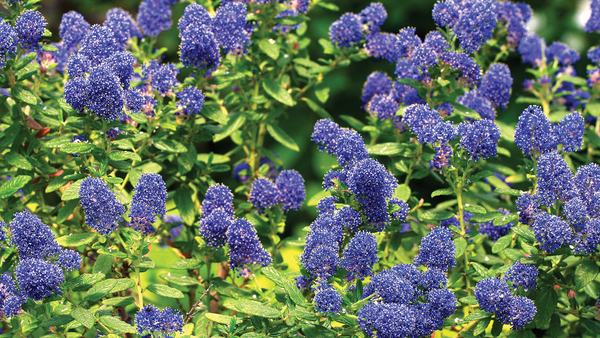












Comments
Log in or create an account to post a comment.
Sign up Log in